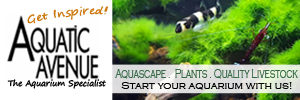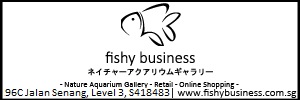Substrate
By substrate we refer to two parts. The Base fertiliser consists of a mix of various nutrients required by plants and is laid on the tank’s bottom, and covered with a thick (2-4 inch) layer of plain gravel (Do not use gravel containing corals or shells as these affect the water’s chemistry!). Many different brands of base fertiliser are available in LFS, and it is not possible to say which is the best. Do refer to the many past discussions on this topic in this forum and the fertilisation forum for the experiences shared by other members
Cooling Systems
Hobbyists who use very intensive lighting may see their water temperature hitting 30°C or more. Most plants do best at a temperature of 25-28°C, so AC/DC fans can be used to cool the water. A more expensive option is to use chillers. The equipment forum contains several interesting discussions on cooling options.
Fertilisation and the Nitrogen Cycle
The Nitrogen Cycle refers to the process by which fish waste is turned by bacteria into Ammonia (NH3) to Nitrite (NO2) to Nitrate (NO3), which is absorbed by the plants. In the first few weeks of a new tank, there is usually insufficient bacteria, so ammonia levels rise quickly, causing fish deaths and algae outbreaks. This is why we recommend you do not put fish other than a few algae-eaters in your tank until the nitrogen cycle is established.
Many hobbyists also fertilise their tanks with the nutrients required by plants, e.g. NO3 (nitrate), PO4 (phosphate), K (potassium), Fe (iron), Mg (magnesium) and other trace elements. This helps the plants to grow at their best and prevent algae outbreaks. It is not necessary to add supplementary liquid fertilisers until 3-4 weeks after a new tank has been setup, so you can use the time to read up on some excellent articles on this topic at: http://www.aquaticquotient.com/phpBB...ic.php?t=12122.
Fish and plant selection
Most fish species are suitable as long as they will not dig up or eat plants. Actually, the fewer species you have, the better the effect. Just look at the tanks by Takashi Amano (www.vectrapoint.com or in the Nature Aquarium/Aquajournal series available in good bookshops and LFS). For help in plant selection, please refer to the online flora databases at aquaticquotient.com, or www.tropica.com or www.dennerle.de.
We hope these tips will start you off on the right footing to an exciting and rewarding hobby, and look forward to sharing more with you at www.AquaticQuotient.com!
Please do not post your questions in this thread!!
I highly recommend that you first read the guide, and browse through the linked articles and threads on the forum to see if you can find questions to your queries. If you can’t find an answer, or wish to get more clarification, please start a new thread for forummers to respond to. Thank you!











 Reply With Quote
Reply With Quote
Bookmarks